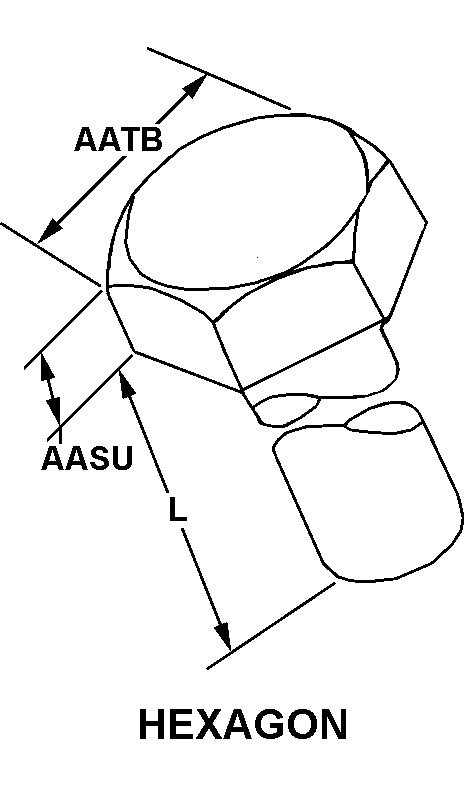5306002060441
Price Quote Get an up to date pricing and availability quote for this product. Order online or over the phone.
Quality Commitment
Serving our customers with quality and safety first.
- AS9120 Certified
- Audited supply chain
- ITAR Registered
- DDTC Registered
- HAZMAT Certified
- Customer service objectives
- Every product 100% inspected

5306-00-206-0441 Specification Set by the OEM (see RNCC code 3)
2a
RIGHT-Hand
1.000in. ⁓1/64"
3.125in. and 3.187in. ⁓3-3/16"
hexagon
0.365in. and 0.386in. ⁓25/64"
0.736in. and 0.750in.
0.495in. and 0.510in.
0.443in.
0.375in.
2.125in. and 2.187in.
0.500in. ⁓1/2"
13
217.0 brinell standard and 285.0 brinell standard
2
thd end chamfered 0.125in. long by 45.0 degrees
steel comp 1035
aisi 1035 assn std single material response
unc
Cross Reference Parts Part numbers that meet the specification outlined on this page and set by the OEM
Identification Item Identification Guide (IIG) and Item Name Code (INC)

Definition Definition of approved item name (AIN): "BOLT,EXTERNALLY RELIEVED BODY"
An externally threaded fastener whose threaded portion is of one nominal diameter, and whose unthreaded portion has been machined or ground in one or more places or over its entire length to a maximum diameter less than the minimum pitch diameter of the thread (excludes undercuts for thread relief). It is no. 10 (0.190 in.) (5 mm) or larger in size and has a head which is not designed to be held or driven with an inserted driver or designed for rotation by the thumb and fingers. A locking feature may be incorporated in the design of the head or threads. Excludes bolt, internal wrenching and thumbscrew. See also screw, externally relieved body.
5306-00-206-0441 Material Hazmat, Precious Metals, Criticality, Enviroment, and ESD
Indicates there is no data in the hmirs and the nsn is in a fsc not generally suspected of containing hazardous materials.
Precious metal content is unknown
The item does not have a nuclear hardened feature or any other critical feature such as tolerance, fit restriction or application.
Identification Codes
HMIC: Hazardous Material Indicator Code. A one position code that identifies a hazardous item.
PMIC: Precious Metal Indicator Code. A one position code which identifies items that have precious metals as part of their content. precious metals are those metals generally considered to be uncommon, highly valuable, and relatively superior in certain properties such as resistance to corrosion and electrical conductivity.
ESD: Electrostatic Discharge. Indicates if an item is susceptible to electrostatic discharge or electromagnetic interference damage. electrostatic discharge damage occurs when an accumulation of static electricity generated by the relative motion or separation of materials is released to another item by direct contact. electromagnetic interference damage occurs when an item comes into proximity with an electrostatic or magnetic field.
ENAC: Enviromental Attribute Code. Identifies items with environmentally preferred characteristics.
CRITL: Criticality Indicator Code. Indicates an item is technically critical by tolerance, fit, application, nuclear hardness properties, or other characteristics.






